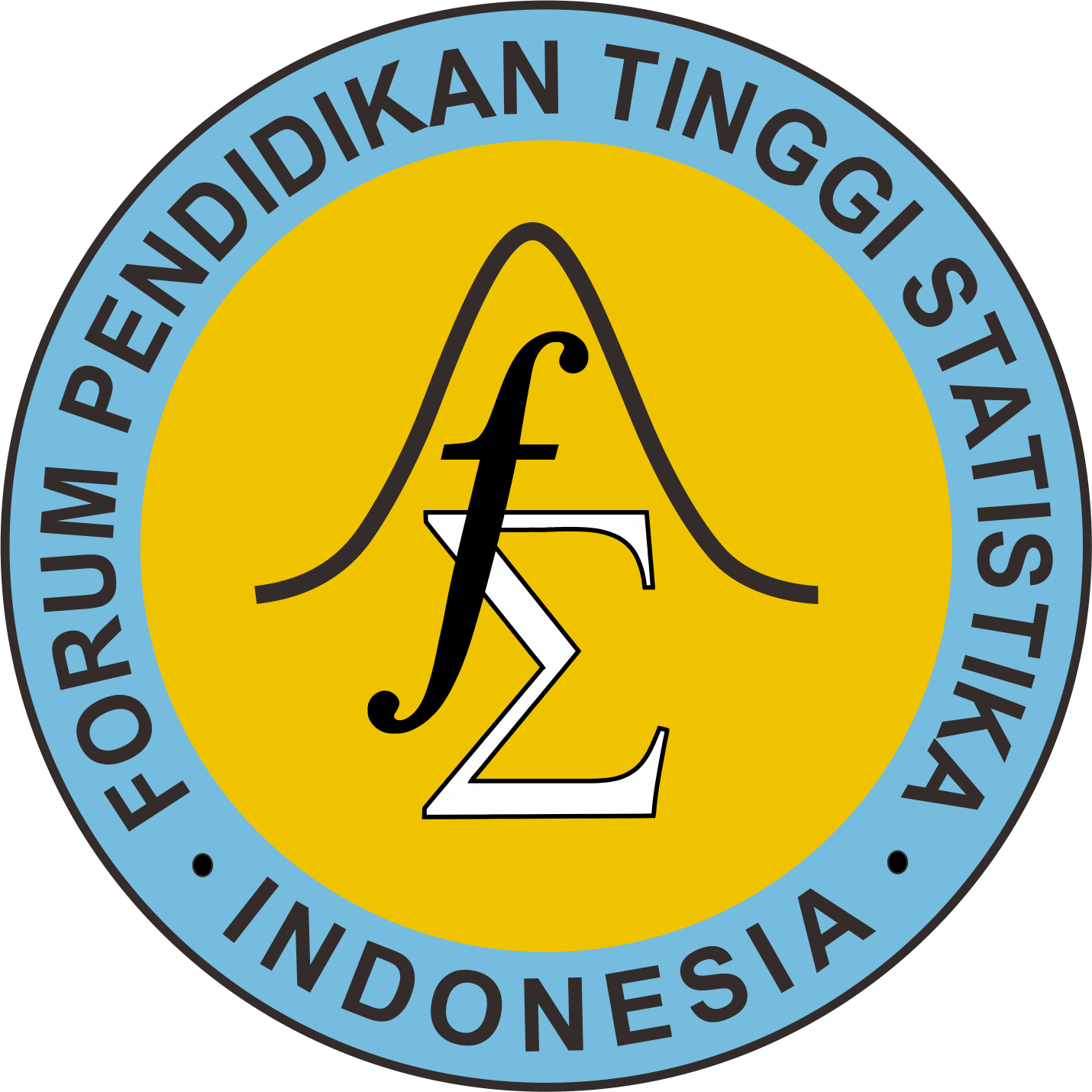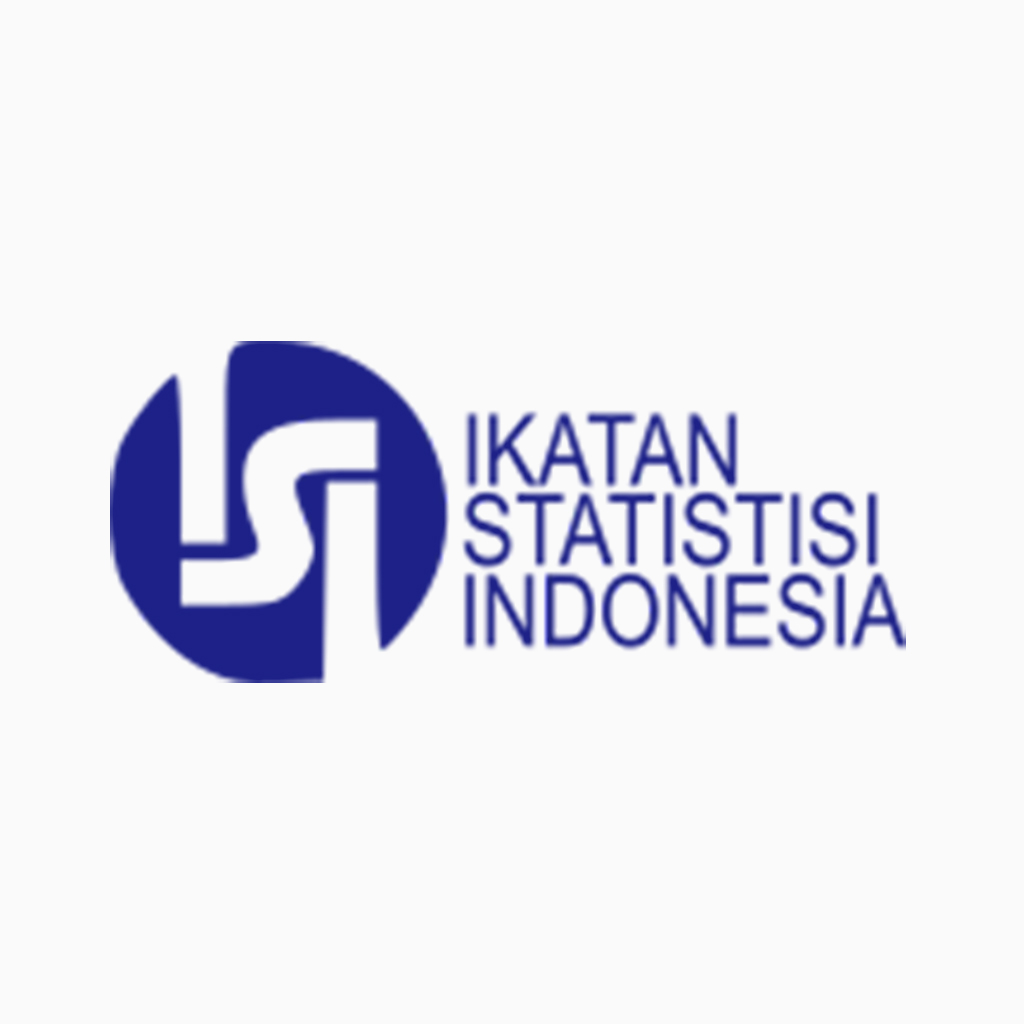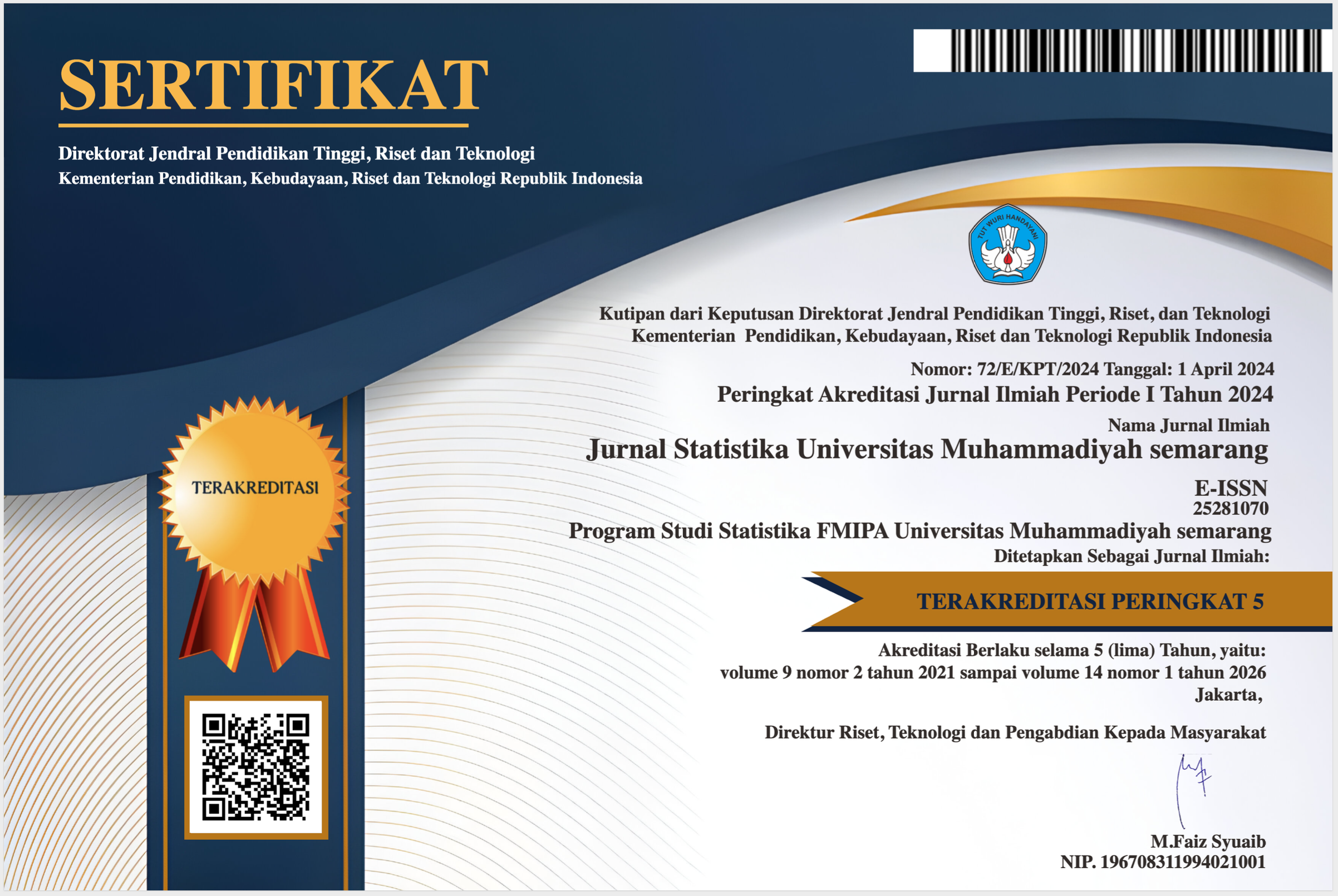Analysis of Enabling Factors on Safety Awareness and Compliance of The Use of PPE in Plastic Sack Industry Workers Using The PLS-SEM Method
(1) Occupational Safety and Health Engineering Study Program, Department of Marine Engineering, Shipbuilding Institute of Polytechnic Surabaya
(2) Master of Safety and Risk Engineering, Shipbuilding Institute of Polytechnic Surabaya
(3) Design and Manufacturing Engineering Study Program, Department of Marine Engineering, Shipbuilding Institute of Polytechnic Surabaya
(*) Corresponding Author
Abstract
Keywords
Full Text:
PDFReferences
E. Prasetyo, “Pengaruh Pengetahuan, Sikap, dan Ketersediaan Alat Pelindung Diri (APD) terhadap Kepatuhan dalam Menggunakan APD di Unit Coating PT. Pura Barutama Kudus,” J. Keperawatan Dan Kesehat. Masy., vol. 2, no. 3, p. 22, 2015.
D. Y. M. Munthe, Hubungan Penggunaan Alat Pelindung Diri (APD) dengan Kecelakaan Kerja pada Penderes Karet di PTPN III Kebun Sarang Giting. Medan: Universitas Islam Negeri Sumatera Utara, 2020.
M. Mustofa, A. Nursandah, and D. N. Haqi, “Analisis Penggunaan Alat Pelindung Diri pada Pekerjaan Pembesian dan Pengecoran Kolom dan Girder di PT. Pembangunan Perumahan (Persero) Tbk. ‘Studi di Proyek Pembangunan Tol Pandaan Malang,’” AGREGAT, vol. 4, no. 2, p. 9, 2019.
H. Priatna and F. Andika, “Faktor yang Berhubungan dengan Kesadaran Keselamatan dan Kesehatan Kerja di Lingkungan Lanud Maimun Saleh Sabang,” J. Healthc. Technol. Med., vol. 4, no. 1, p. 71, Mar. 2019, doi: 10.33143/jhtm.v4i1.168.
A. R. Hakim and K. Febriyanto, “Hubungan Pengetahuan dengan Kepatuhan Penggunaan APD pada Pekerja di PT. Galangan Anugrah Wijaya Berjaya Samarinda,” Borneo Stud. Res., vol. 2, no. 1, pp. 446–452, 2020.
R. Z. N. Amalia, D. Kurniasih, and A. Maisarah D., “Penerapan Analitycal Hierarchy Process (AHP) Untuk Mengetahui Penyebab Kecelakaan Kerja Pada Perusahaan Kemasan Menggunakan Siklus Plan-Do-Check-Action (PDCA),” 3rd Proceeding Conf. Saf. Eng., pp. 541–546, 2019.
S. Khairiah and N. Widajati, “Analisis Implementasi Penanggulangan Kejadian Luar Biasa Difteri Di Wilayah Kerja Dinas Kesehatan Provinsi Jawa Timur,” MTPH J., vol. 4, no. 2, 2020.
R. R. Marliana, “Partial Least Squares-Structural Equation Modeling pada Hubungan antara Tingkat Kepuasan Mahasiswa dan Kualitas Google Classroom berdasarkan Metode Webqual 4.0,” vol. 16, no. 2, pp. 174–186, 2020.
Sutopo and M. B. Hendrawan, Analisis Pengaruh Beban Kerja Terhadap Produktivitas Kerja di Industri Pembuatan Cat Epoxy. Surabaya: Politeknik Perkapalan Negeri Surabaya, 2019.
H. Wold, Partial Least Square. In G. A. Marcoulides, Modern Methods For Business Research (p. 295). New York: Psychology Press, 2013.
Nasrulzaman and A. Hasibuan, “Analisis Perilaku, Ketersediaan dan Pengawasan Penggunaan Alat Pelindung Diri (APD) di Perusahaan Meubel X,” Bul. Utama Tek., vol. 13, no. 2, p. 10, 2018.
D. N. Azizah, R. M. Pulungan, D. Utari, and A. A. Amrullah, “Faktor-Faktor yang Berhubungan dengan Kepatuhan Menggunakan Alat Pelindung Diri (APD) pada Pekerja Proyek Pembangunan PLTGU Muara Tawar (Persero),” J. Ilm. Kesehat. Masy. Media Komun. Komunitas Kesehat. Masy., vol. 13, no. 3, pp. 141–150, Sep. 2021, doi: 10.52022/jikm.v13i3.177.
A. Rose and W. I. D. Rae, “Personal Protective Equipment Availability and Utilization Among Interventionalists,” Saf. Health Work, vol. 10, no. 2, pp. 166–171, Jun. 2019, doi: 10.1016/j.shaw.2018.10.001.
F. Talakua and B. R. Etnis, “Pengaruh Pelatihan Terhadap Pengetahuan, Sikap dan Pengawasan Penggunaan Alat Pelindung Diri di PT. United Tractors Tbk Cabang Sorong,” J. Penelit. Kesehat. SUARA FORIKES J. Health Res. Forikes Voice, vol. 11, no. 0, Art. no. 0, Nov. 2020, doi: 10.33846/sf11nk415.
F. Fassa and S. Rostiyanti, “Pengaruh Pelatihan K3 terhadap Perilaku Tenaga Kerja Konstruksi dalam Bekerja Secara Aman di Proyek,” J. Archit. Innov., vol. 1, p. 15, 2020.
H. I. Kaplan and B. J. Sadock, Synopsis Of Psychiatry: Behavioral Scienes/Cinical/Psychiatri-Elevent Edition. Philadelphia: Wolters Kluwer, 2015.
Nursiah, Gambaran Kepatuhan Penggunaan Alat Pelindung Diri (APD) Petugas Igd Di Rumah Sakit Umum Daerah Kota Makassar Pada Masa Pandemi Covid-19. Makassar: Universitas Hasanuddin, 2021.
P. E. Septiana, Pengaruh Safety Awareness terhadap Safety Behavior dengan Safety Climate Sebagai Moderasi dan Mediasi pada PT Lamong Energi Indonesia. Surabaya: Fakultas Ekonomi dan Bisnis Universitas Airlangga, 2020.
S. Haryono, Metode SEM Untuk Penelitian Manajemen dengan AMOS 22.00, LISREL 8.80 dan Smart PLS 3.0 (Issue July). Jakarta: PT. Intermedia Personalia Utama, 2016.
F. Fazriansyah, N. A. Sari, and M. Mawardi, “Apakah persepsi kemudahan penggunaan dan persepsi kegunaan berpengaruh terhadap niat untuk menggunakan dan penggunaan aktual pada aplikasi pembayaran digital?,” J. Manaj., vol. 14, no. 2, pp. 271–283, Jun. 2022, doi: 10.30872/jmmn.v14i2.11126.
M. N. Vinodkumar and M. Bhasi, “Safety management practices and safety behaviour: Assessing the mediating role of safety knowledge and motivation,” Accid. Anal. Prev., vol. 42, no. 6, pp. 2082–2093, Nov. 2010, doi: 10.1016/j.aap.2010.06.021.
M. Wang, J. Sun, H. Du, and C. Wang, “Relations between Safety Climate, Awareness, and Behavior in the Chinese Construction Industry: A Hierarchical Linear Investigation,” Adv. Civ. Eng., vol. 2018, pp. 1–8, Jul. 2018, doi: 10.1155/2018/6580375.
Kusmeri, “Pengaruh Remunerasi dan Kepuasan Kerja terhadap Komitmen Organisasi dalam Meningkatkan Kinerja Pegawai di Sekretariat Utama Perpustakaan Nasional,” Ind. Eng. J., vol. 7, no. 1, pp. 43–49, 2018.
Y. Liswanti, A. S. Raksanagara, and S. Yunita, “Faktor-Faktor yang Berhubungan dengan Kepatuhan Penggunaan Alat Pelindung Diri (APD) serta Kaitannya terhadap Status Kesehatan pada Petugas Pengumpul Sampah Rumah Tangga di Kota Tasikmalaya Tahun 2014,” J. Kesehat. Bakti Tunas Husada J. Ilmu-Ilmu Keperawatan Anal. Kesehat. Dan Farm., vol. 13, no. 1, May 2015, doi: 10.36465/jkbth.v13i1.34.
A. A. Dewi, A. Maurissa, and Yullyzar, “Hubungan Self Awareness dengan Kepatuhan Perawat dalam Penggunaan Sarung Tangan di RSUD Meuraxa,” JIM FKep, vol. 6, no. 2, 2022.
I. P. Dewi, W. R. Adawiyah, and L. Rujito, “Analisis Tingkat Kepatuhan Pemakaian Alat Pelindung Diri Mahasiswa Profesi Dokter Gigi Di Rumah Sakit Gigi dan Mulut Unsoed,” J. Ekon. Bisnis Dan Akunt., vol. 21, no. 4, 2019, doi: 10.32424/jeba.v21i4.1541.
U. Damayanti, R. P. Hilintang, and N. Widajati, “Determinant Factors Affecting the Compliance With the Use of Personal Protective Equipment (PPE) in Gas Plant,” Malays. J. Med. Health Sci., vol. 15, no. 3, 2019.
L. M. A. Isnaeni and A. D. Puteri, “Faktor yang Berhubungan dengan Kepatuhan Perawat dalam Penggunaan Alat Pelindung Diri di RSUD X,” J. Ners, vol. 6, no. 1, pp. 14–22, 2022.
R. M. El-Sallamy, I. A. Kabbash, S. A. El-Fatah, and A. El-Feky, “Physical hazard safety awareness among healthcare workers in Tanta university hospitals, Egypt,” Environ. Sci. Pollut. Res., vol. 25, no. 31, pp. 30826–30838, Nov. 2018, doi: 10.1007/s11356-017-9110-6.
Ernayasih, T. Rahmawati, M. Fauziah, and N. Lusida, “Faktor - Faktor Yang Berhubungan Dengan Perilaku Tidak Aman Pada Pekerja Proyek The Canary Apartment Pt. Abadi Prima Intikarya Tahun 2022,” Environ. Occup. Health Saf. J., vol. 3, no. 1, pp. 45–54, 2022.
D. A. Desmayanny, I. Wahyuni, and Ekawati, “Literature Review : Faktor Terjadinya Unsafe Action pada Pekerja Sektor Manufaktur,” vol. 8, no. 6, Nov. 2020.
D. R. Djupri and I. Sulistia, “Hubungan Self Awareness, Tingkat Pendidikan dengan Kedisiplinan Memakai Masker di Era New Normal pada Warga RT 04 RW 05 Kelurahan Bintaro,” JAKHKJ, vol. 7, no. 3, 2021.
P. S. Putra, A. D. Sari, and A. S. Husna, “Job safety and awareness analysis of safety implementation among electrical workers in airport service company,” MATEC Web Conf., vol. 154, p. 01087, 2018, doi: 10.1051/matecconf/201815401087.
J. Sangaji, S. Jayanti, and D. Lestantyo, “Faktor-Faktor yang Berhubungan dengan Perilaku Tidak Aman Pekerja Bagian Lambung Galangan Kapal PT X,” J. Kesehat. Masy., vol. 6, 2018.
Article Metrics
Abstract view : 484 timesPDF - 149 times
DOI: https://doi.org/10.26714/jsunimus.11.2.2023.1-11
Refbacks
- There are currently no refbacks.
Copyright (c) 2023 Jurnal Statistika Universitas Muhammadiyah Semarang
Editorial Office:
Department of Statistics
Faculty Of Mathematics And Natural Sciences
Universitas Muhammadiyah Semarang
Jl. Kedungmundu No. 18 Semarang Indonesia
Published by:
Department of Statistics Universitas Muhammadiyah Semarang
This work is licensed under a Creative Commons Attribution 4.0 International License








2.png)



